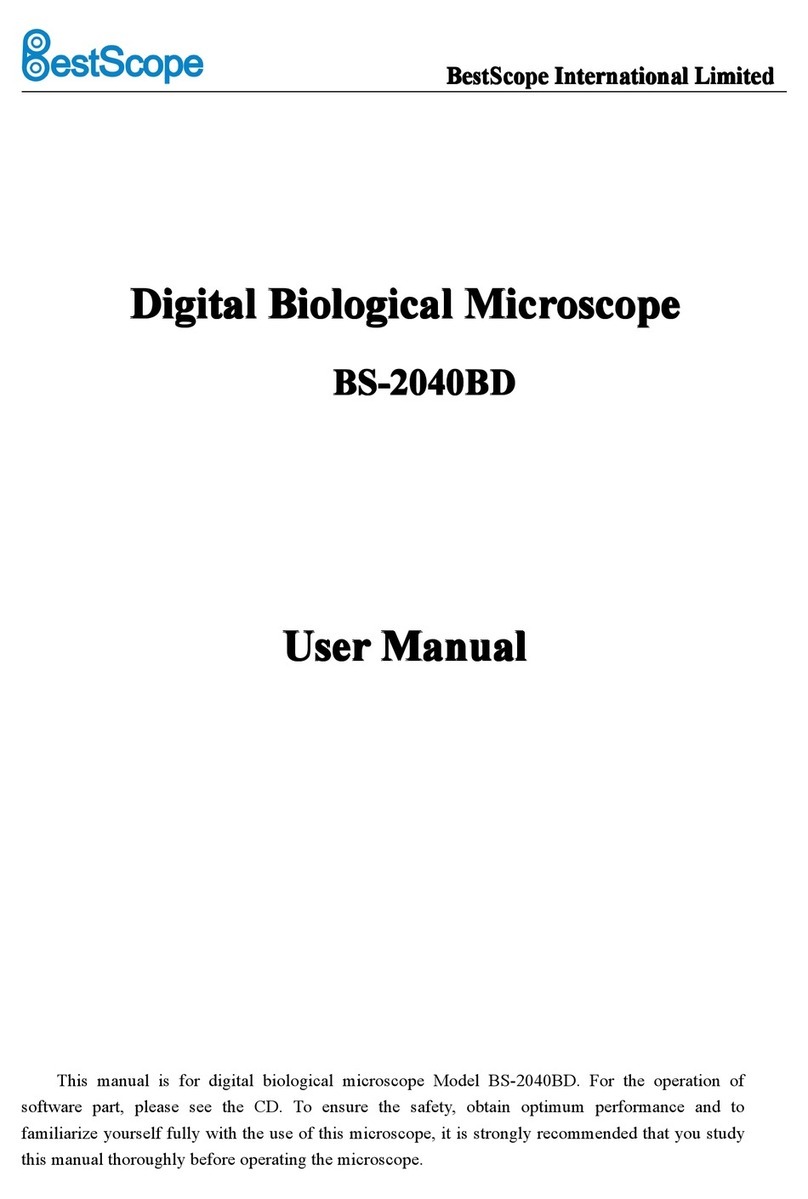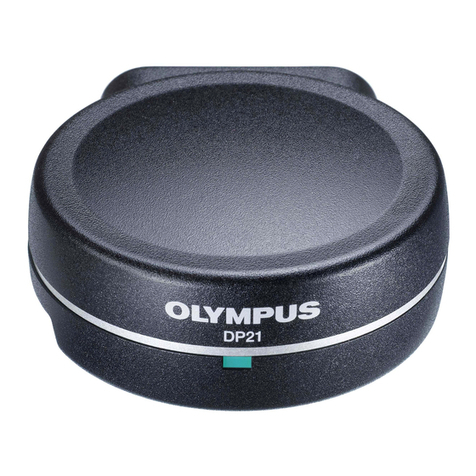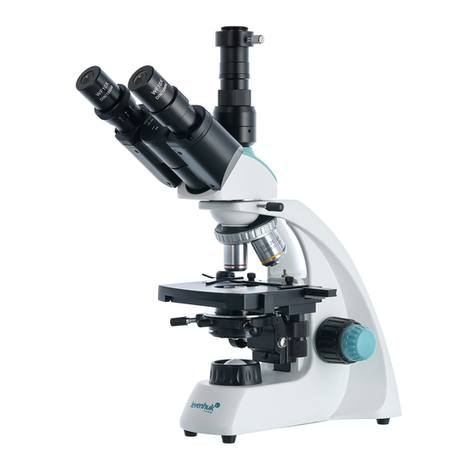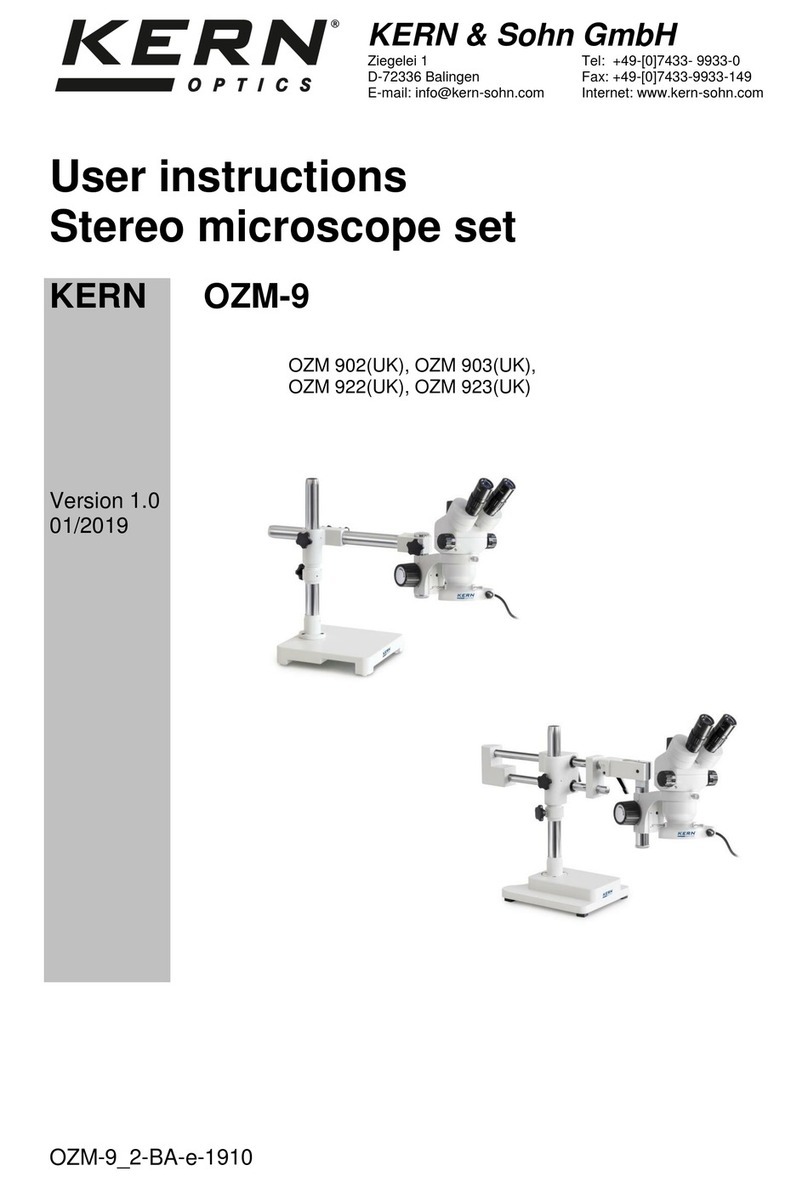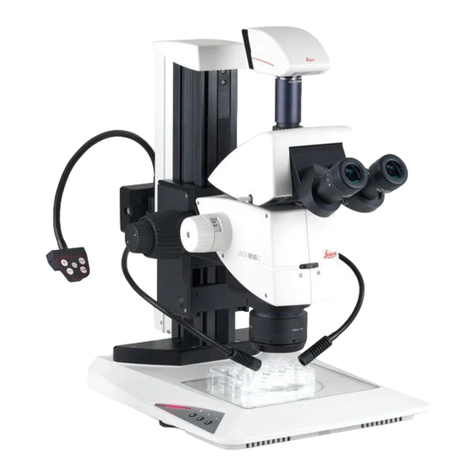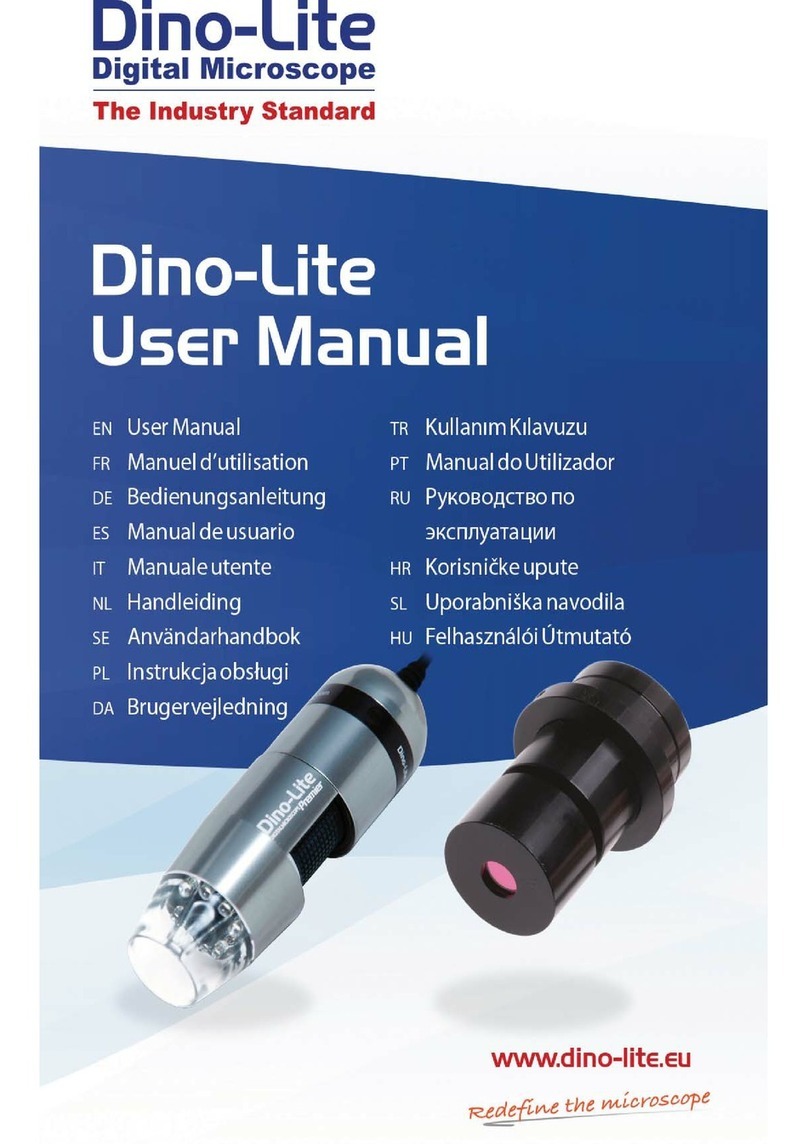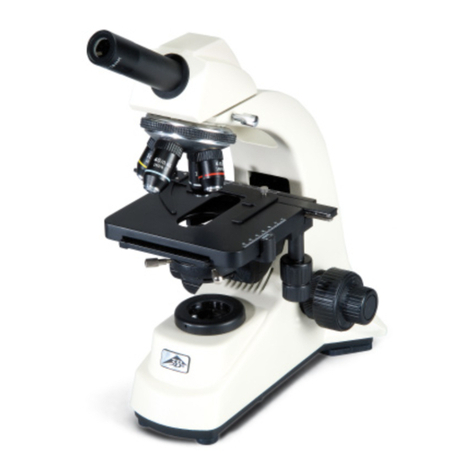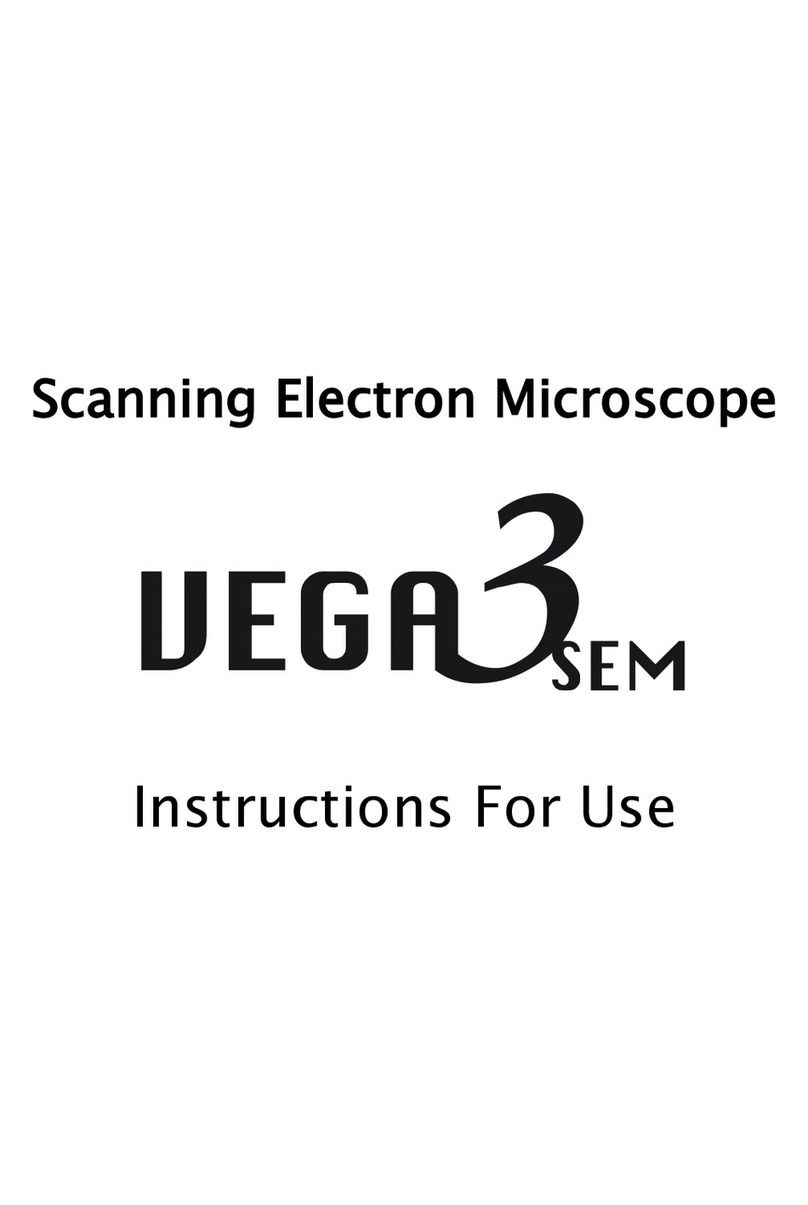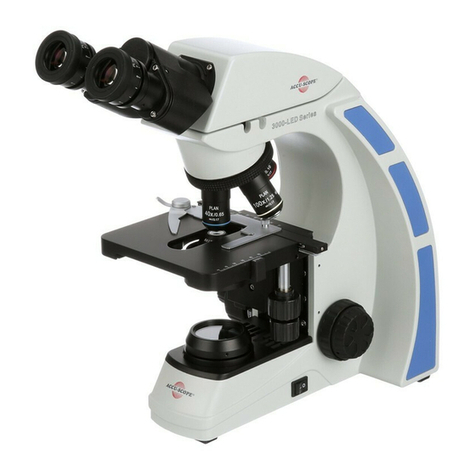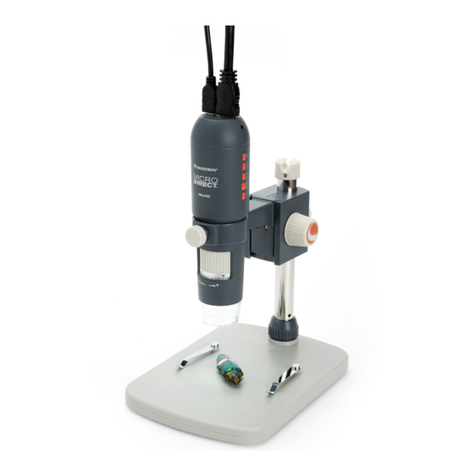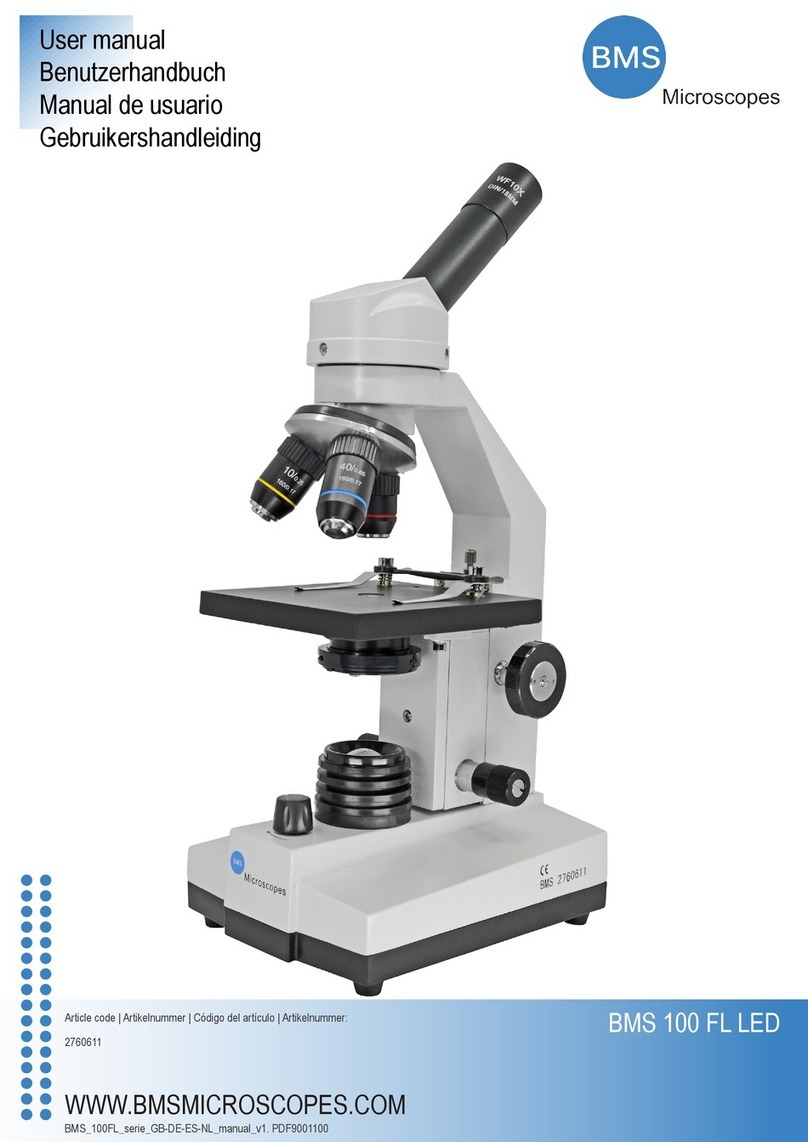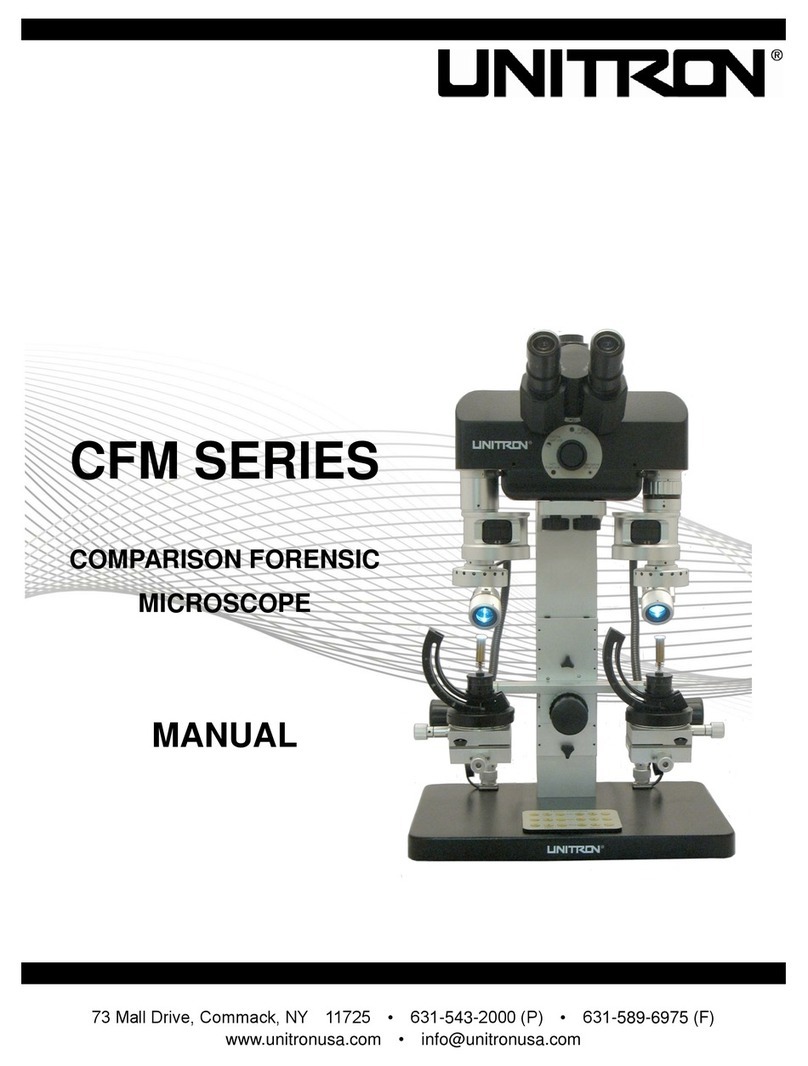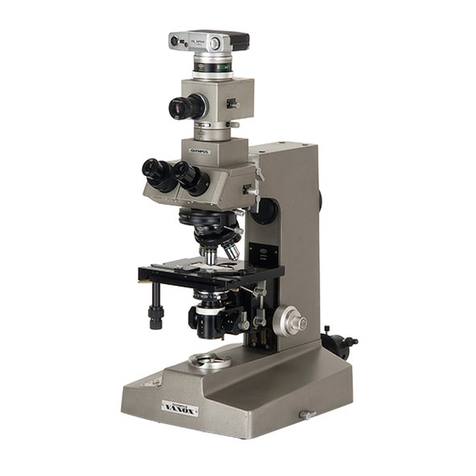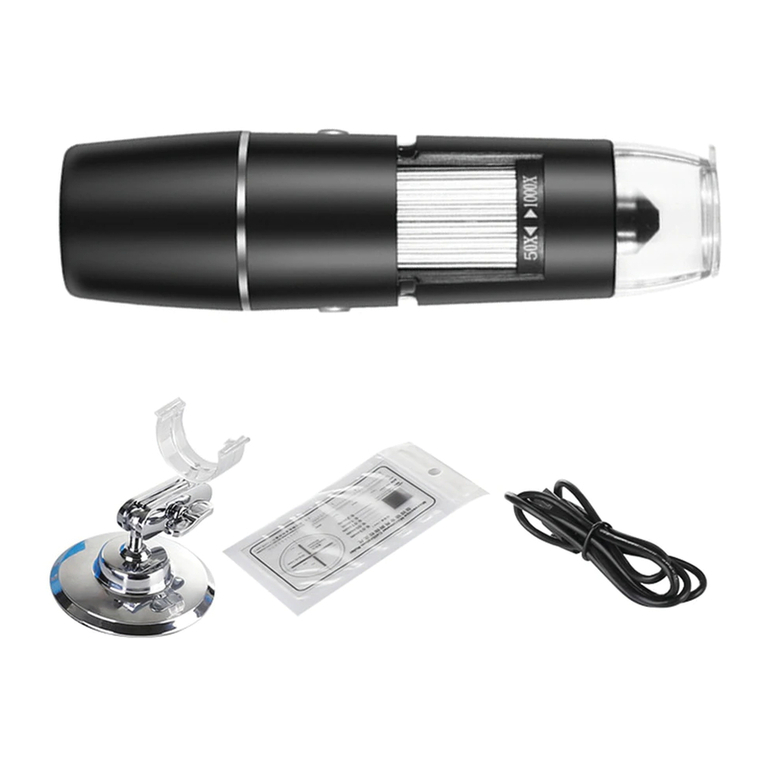My First Lab DUO SCOPE MFL-06 User manual

My First Lab®
DUO SCOPE™
USER MANUAL
Model MFL-06
This microscope is intended for use by ages 9 and older.
Parents are reminded this is a scientific tool and contains glass microscope slides and sharp instruments.
Proper handling and parental supervision is required.
Always follow the appropriate safety procedures.


With the My First Lab® DUO SCOPE™ you have the ability to observe both
microscope slides and solid objects, such as plants, coins and insects. The key
is in the dual, cool LED illumination that provides both sub-stage and
overhead lighting. Battery power eliminates the need for electricity or power
cords and allows for portable use “in the field”. The My First Lab® DUO
SCOPE™ combines two separate applications into one fantastic package that
promises hours of fun and learning.
Magnifications
The total magnification is calculated by multiplying the eyepiece
magnification (always 10X) by the objective lens.
Objectives
“Compound” use
(lower lighting)
“Stereo” use
(upper lighting)
4X
40X
40X
10X
100X
100X
40X
400X
N/A
Note: the 40X lens is not suitable for use with the upper lighting due to the
focusing distance required. The lens must be too close to the specimen and
will not allow enough light to reach the specimen.
Specifications
•10X Eyepiece
•4X, 10X, 40X Objectives
•Real Optical Glass Lenses
•Dual LED lights (above and below)
•Dual focusing knobs
•Disc Diaphragm
Dimensions: 4 ½” x 6 ½" x 11 ½" high; Net Weight: 1.95 lbs.
*Instrument is powered by 3 AA Batteries (not included)

Components
Study the picture below to become familiar
with the different parts of your microscope.

Accessories
My First Lab® DUO SCOPE™ is equipped with the following accessories:
1. 5 Plain Slides
2. 1 Concave Slide
3. 4 Prepared Slides
4. Cover Glass
5. Plastic Transfer Pipet
6. 2 Bottles of Non-Toxic Stain (Red & Blue)
7. Lens Paper
8. Forceps
9. Plastic Test Tube
10. Plastic Petri Dish
Everything is ready, so let’s start the scientific study and adventure!
Save the plastic bag the microscope comes packed in to use
as a dust cover when your microscope is not in use.

Maintenance
To prolong the life of your batteries, turn off the power immediately when not
in use (be sure all lights are off—switch in the center position.) Dust the unit
with a soft dry cloth or soft brush. Fingerprints and debris may be removed
with a damp cloth. If glass lens require cleaning, try a cotton swab very
slightly moistened with alcohol. Dry with a clean swab or lens paper.
Store your microscope in a cool dry place. Always cover or return to the box
when not in use. If used “in the field” take care to keep the unit upright as the
eyepiece can fall out if tipped. Eyepieces and lenses should remain in place to
avoid dust in the tubes. Keep microscope slides in their proper storage unit
when not in use. Always use care with real glass and keep out of reach of
young children.
When lights seem dim, replace the batteries with fresh AA batteries. (Be sure
to dispose of used batteries properly.) The LED light bulbs have a long life span
and should not require replacing. If either bulb does not work, even after
installing fresh batteries, please call for service.
Proper care and use of this product can result in years of scientific study and
adventure. Enjoy!
IMPORTANT: BATTERY INFORMATION
Please retain this information for future reference. Batteries should be
replaced by an adult.
CAUTION:
1. Always follow the instructions carefully. Make sure the power is off
when inserting batteries. While replacing batteries be careful to not
turn on the power supply.
2. Use only batteries specified and be sure to insert item correctly by
matching the + and – polarity markings.
3. Do not mix old batteries and new batteries or standard (carbon-zinc)
with alkaline batteries.
4. Remove exhausted or dead batteries from the product.
5. Remove batteries if product is not to be played with for a long time.
6. Do not short circuit the supply terminals.

7. Should this product cause, or be affected by, local electrical
interference, move it away from other electrical equipment. Reset
(switching off and back on again or removing and re-inserting
batteries) if necessary.
8. RECHARGEABLE BATTERIES: Do not mix these with any other types of
battery. Always remove from the product before recharging.
Recharge batteries under adult supervision. DO NOT RECHARGE
OTHER TYPES OF BATTERIES.
Insert and Replacing Batteries
The battery compartment is located under the base of the microscope.
Carefully turn your microscope over, taking care the eyepiece does not fall
out, to reveal the battery compartment. Open the compartment and insert 3
AA batteries (not included). Replace the battery compartment cover.
Preparation
Please read this section completely before using your microscope. Study the
Components Diagram to learn the various parts of the microscope.
Proper Handling
When carrying the microscope hold the microscope by the “arm” and have
the other hand firmly under the “base” for support. Always set up your
microscope on a smooth surface, such as a desk or table.
Before using the scope, practice slowly turning the focusing knob (you can use
either knob on the left or right side of the scope) and watching the stage
move without looking through the eyepiece, this will help to familiarize
Arm of Microscope
Base of Microscope
Always set your microscope on a smooth, stable
surface, such as a desk or table.

yourself with the direction you should turn the knob to move the stage closer
to the objectives.
The My First Lab® DUO SCOPE™ has the capability to illuminate the
specimen from the top (stereo microscope) or the bottom (compound
microscope). Notice the power switch located on the back of the scope. This is
a 3 way switch to operate either the bottom light (set to the single line), both
lights (set to the double line), or set to the off position (circle in between the
two lines).
Operation
Viewing Slides
Begin with the stage platform at its lowest position. To observe specimens,
check the objective lens, and if necessary, rotate the nosepiece so that the 4X
objective lens is in position for viewing. The lens will “click” when in place.
Focusing Tip Always start viewing any specimen with the 4X objective and
increase accordingly.
Begin by selecting a prepared slide and placing it carefully on the stage
(labeled side up). Push gently on the back of the clips enough to slip the slide
under and hold it in place. The main part of the specimen should be centered
over the opening in the stage.
Turn on the bottom light (single line on power switch) to shine the light up
through the stage and through the specimen on the slide.
Look through the eyepiece and SLOWLY turn the focusing knob until the
Nosepiece
4X Objective
Rotate the nosepiece to the 4X objective for viewing
and your image is magnified 40X.

image of the specimen becomes clear. Be careful not to let the slide touch the
lens.
Focusing Tip While focusing, if the stage stops moving, DO NOT FORCE IT. You
may damage the microscope.
The disc diaphragm, located directly below the stage, has six different
apertures (openings), which allow various amounts of light to pass through.
Rotating this disc allows you to modify the amount of light that is transmitted.
Try experimenting with various settings to get the most effective view.
After observing with the 4X objective (which shows you the image magnified
40X), rotate the nosepiece to the 10X objective lens (leave the slide in place
on the stage). SLOWLY turning the focusing knob will enable you to get a clear
view of your specimen at 100X magnification.
Finally, you can turn the nosepiece to the 40X objective, giving you a 400X
magnification of your slide. When increasing magnification, always remember
that the higher the magnification, the closer the objective must be to the
specimen being observed.
Focusing Tips The 40X lens will appear to be almost touching the slide. This is
normal. Always move the focusing knobs very slowly to avoid breaking the
slide with the objective. Be careful not to put weight against the stage as this
could push it out of focus. (If this occurs, simply readjust the focusing knobs
slightly until you again have a clear view.)
When changing slides, move the stage to its lowest position by turning the
focusing knob, push the clips to remove and replace slides and begin
observing with the 4X objective again.
Disc Diaphragm
Rotating this disc allows you to modify the amount
of light that is transmitted.

Viewing 3D Objects
As with viewing slides with the microscope, always begin your observation
with the 4X objective and increase magnification accordingly.
Focusing Tip Only the 4X and 10X objectives may be used when viewing 3D
objects. The 40X objective is not suitable for use with the upper lighting due
to the focusing distance required.
For contrast, you may find it necessary to place certain specimens on an index
card or small piece of paper before centering them on the stage. When you
are using the top light, it will not be necessary for the opening in the stage to
be exposed for the lower light to shine through. Also, you do not want your
specimen to fall through the hole!
This application allows you to magnify and view countless everyday items like
small rocks, leaves, insects, flower petals, coins, stamps, jewelry and more.
Focusing Tip A 3D specimen, like a small insect, will have different levels to
focus on; therefore the entire image may not seem clear at the same time.
Compare to a flat field, such as a postage stamp, where the specimen is all at
the same level which allows the microscope to focus on the entire field. With
a little practice, you can soon become an expert at observing all types of
specimens with the My First Lab®DUO SCOPE™.
Remember to turn on the overhead
illuminator.

Ideas for Observation
Children: Always get an adult’s permission
before trying any experiments!
1. Crystals: Place a few grains of dry salt or sugar on a slide to observe. Mix
salt with a spoonful of warm water in the test tube and then use the
plastic transfer pipet to place a couple drops on a plain slide. Let it dry
and observe the re-crystallized salt/sugar.
2. Shake some grains of pollen from a flower onto a plain slide. Now
observe!
3. Hairs, including pet hair, or pieces of feathers, can be observed. Try
comparing hairs from various animals. You can use a small piece of tape at
each end of the hair to hold it on the slide.
4. Observe fibers in different kinds of paper, printing from a newspaper or
printer. Look at the color in comics. Compare threads or fibers from
different types of fabric.
5. Stagnant water from a pond will contain live organisms. Place a drop into
the well of a concave slide for observation.
Many specimens may look transparent under the microscope. It’s common to
stain them to make the cells show up better. Iodine is a common stain. You
can also try soaking your specimens in a solution of ordinary food color and
water for a couple of minutes to stain them. Use the plastic forceps to pick up
the stained specimen. Allow the stained specimen to dry before mounting it
to the slide. Caution: the stain will color anything else it touches, not just your
specimen, so be careful with furniture and clothing.

Insect Observation
Below are some screen shots to compare the wings of several different
insects. Notice the difference in the shape and structure. Use your microscope
to compare other similar common household items.
Mold Growth Observation
1. Get some water, a paper plate and one piece of bread.
2. Place the bread on the plate and drop a little water on the bread to make
it damp (not soaked).
3. Place the bread in a cool dark location (such as a cupboard).
4. Observe the bread daily. Do not eat it.
5. Once mold has formed on the bread, place the plate with moldy bread
under the microscope.
Notice the mold’s interesting shape. Fungal spores exist all around us. These
spores settle on the bread and use the water and food from the bread to
grow. Mold may have different colors and shapes. After focusing you can
move the plate left or right on the stage to observe different sections of the
same specimen.
Honeybee Wing
(40X Magnification)
Fly Wing
(40X Magnification)
Mosquito Wing
(40X Magnification)

Mitosis in Onion Cells
Mitosis is part of the cell cycle when replicated chromosomes are separated
into two new nuclei.
Observation Steps
1. With an adult’s supervision, cut a small piece of an onion (approximately
¼ - ½ inch).
2. Using the forceps, peel off the membrane from the underside (the rough
side).
3. Place the membrane flat on the surface of a microscope slide.
4. Add 1-2 drops of the non-toxic stain. Please wait for 2 to 3 minutes for the
onion to absorb the stain. Caution: Protect surfaces & clothing when
using stain!
5. Using the plastic transfer pipet rinse the excess stain with water.
6. Add one cover glass on top of the onion membrane. Make sure there are
no air bubbles underneath.
7. Begin with the stage platform at its lowest position. Rotate the nosepiece
to ensure 4X objective lens is being used. Turn on the bottom illuminator
to shine the light up through the stage.
8. Place the onion cell slide onto the stage of the microscope.
9. Looking through the eyepiece, SLOWLY turn the focusing knob to allow
the 4X objective to get closer to the slide until an image comes into focus.
10. Increase the magnification and repeat the process above; please allow
enough space between objectives and specimen for proper viewing.
In the picture below, the dark blue images are the chromosomes of the onion
membrane. In some cells you can see the chromosomes being pulled apart to
create the new cells.

Notes


LIMITED ONE YEAR WARRANTY
The manufacturer warrants this instrument to be free from defects in material and
workmanship under normal use for one year from the date of purchase. It does not
cover damage resulting from abuse or misuse, repairs or alterations performed by
other than authorized repair technicians, or damage occurring in transit.
For warranty service, microscope should be well packed to avoid damage in transit,
preferably in original box and packing. Include your complete return address and
telephone number as well as a description of the difficulty, and ship, postage prepaid,
to the address below. It will be repaired or replaced at no charge and returned. If
misuse, alterations, accident or abnormal conditions of operation caused failure, an
estimate for repairs will be provided for your approval prior to work being performed.
If you have questions concerning this product or warranty, contact the dealer from
whom it was purchased.
Microscope Service Department
7241 Gabe Court
Manassas, VA 20109-2434
703-330-1413
(22/5)
©2017
Made in China
Table of contents
